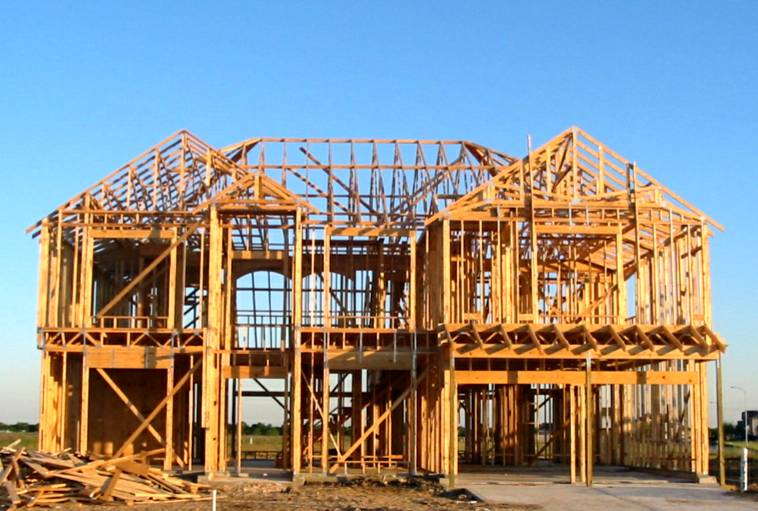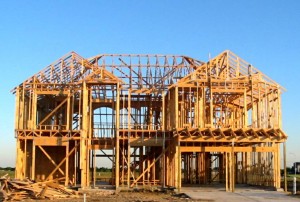 Real estate in Napa Valley is shaping up to be one of the biggest years for home buyers in the last decade. Prices will continue to fall and foreclosures will continue to rise, contrary to news articles you may have read in the Napa Register and SF Gate. There will be many opportunities to purchase real estate at Silverado Country Club, Napa and St. Helena at very discounted prices.
Real estate in Napa Valley is shaping up to be one of the biggest years for home buyers in the last decade. Prices will continue to fall and foreclosures will continue to rise, contrary to news articles you may have read in the Napa Register and SF Gate. There will be many opportunities to purchase real estate at Silverado Country Club, Napa and St. Helena at very discounted prices.
As 2012 rumbles out of the gate, the US housing market correction enters its sixth year. By all accounts, it’s been the worst real estate slump in generations, as housing bears troll through data releases looking for ominous warnings that vindicate their view that homebuyers and investors alike should shun real estate. They have a point, but record foreclosures, bloated inventory and home price declines are anything but news.
They are also missing the point entirely: The time to be bearish on housing was in 2005, not 2012.
For those not in the market, who get their color from the blogosphere and headline-selling financial press, the housing market is a mess: Foreclosures persist, unemployment is high, Europe is in turmoil, growth in China and the other BRICs is slowing and banks are doing their best to avoid giving out loans. And that’s all true.
But come December when we look back at how the housing market fared in 2012, this will not be a year remembered for how bad it was, but for how bad it wasn’t. Over the course of the six-year housing correction, immense amounts of risk have been bled out of the market to a point where, in general, opportunities for good investments outweigh the risk of further losses.
Below are 12 themes for housing in 2012, and while not all represent rosy optimism, they support my continued view that housing bears are seven years late to the party. And while bulls may be early, the good ones always are.
1. Bottom Calling
All of a sudden it’s cool again to call the bottom in the housing market. Already, some prominent pundits and analysts have said 2012 will mark housing’s nadir. Goldman Sachs (GS) came out with a report in December predicting that the widely-watched Case Shiller Home Price Index would slip in 2012 but find a bottom. Optimism that Goldman’s forecast will come true should be tempered, however, since real estate website Zillow (Z) — recently published a report of their own pointing to 2012 as housing’s low point. And remember, in 2009, 2010 was supposed to be the bottom. Then it was 2011. Midway through this year, if housing remains weak, look for those bold analysts to backpedal, finding unforeseen circumstances that rendered their predictions null.
2. Robo-Signing Hangover, Cured?
This time last year, the housing market was holding its collective breath as the robo-signing scandal broke, revealing shoddy foreclosure processes, first at Ally Bank (formerly GMAC), then Bank of America, JPMorgan Chase and nearly all the country’s biggest lenders. The repossession machine ground to a halt, resulting in limited supply of new foreclosures coming to market. Banks scrambled to “investigate” their procedures, uncovering a litany of practices that were sloppy at best, illegal at worst. Even firms like Lender Processing Services, which provides back office support and services to the mortgage industry, got wrapped up in the scandal. As a result, foreclosures virtually ground to a halt in 2011, which helped prop up prices in the first half of the year. In many areas, price declines accelerated into year-end as banks resolved their robo-signing issues again and restarted the foreclosure machine. 2012 looks to be another year heavy in foreclosures, but with hoards of cash buyers looking for distressed properties, it will take a true deluge of inventory to overwhelm pent-up investor demand.
3. Geopolitical Uncertainty
The world is a mess. The list of geopolitical tinderboxes that could catch flame at any moment is too long to reprint here. Suffice to say, every asset class on an investor’s menu is laced with risk, many of which have little to do with the fundamentals of the investment itself. And with risk at all-time highs and returns on savings at all-time lows, steady, cash-flowing assets are starting to be seen as more attractive than they are boring. This flight to quality is one of the reasons cities like San Francisco, New York, Boston and Washington have seen investors flock to their Class A properties. A world where demand dries up in midtown Manhattan or downtown San Francisco is an ugly world indeed, and many view real estate a safe “as long as the world doesn’t completely implode I will be OK” bet.
4. Foreclosure Rental Program
The latest in a string of Washington-directed solutions to the housing market’s woes is the turning of millions of foreclosed homes into rentals. The Federal Housing Finance Agency, which oversees Fannie Mae and Freddie Mac , received over 4,000 proposals after requesting ideas on how to structure its program to rent foreclosed homes. All the big players tossed their hats into the ring, in addition to financial firms like Fortress Investment Group , Deutsche Bank and Barclays Capital. With rents rising and home prices falling, regulators and politicians alike think they may have found a way to not only keep bank-owned homes from pushing home prices down any further, but earn a couple bucks in rental income in the process. And while major lending institutions are playing ball to show they don’t relish in kicking Americans out of their homes, the logistical challenges to managing nationwide rental programs are, in a word, significant. Time, and data on actual REO homes turned into rentals, will prove out just how successful the initiative ultimately is and how much of it is political fluff.
5. Return of alternative lending
So-called “exotic” lending during the boom was one of the chief culprits in the housing market’s eventual collapse. But to think that alternative lending has no place in the market is plain ignorant. Through Fannie Mae, Freddie Mac and the Federal Housing Administration (FHA), government-backed mortgages – and their strict guidelines – dominate the current market for home loans. But increasingly, small originators are gaining market share by offering more flexible loan products. No one will call the loans “Alt-A” or “Subprime,” but that’s exactly what they are. But from the guidelines my firm has has seen, underwriting is far more reasonable and responsible than it was during the boom. Good borrowers with dinged credit or alternative income situations have been locked out of the mortgage market since the crash – bringing them back in will be a positive headwind for housing in the coming years.
6. Multi-Family Momentum
The hottest sector in real estate right now is multi-family. It seems like everyone wants to buy apartment buildings, in particular in coastal metro markets where rents are going through the roof. Cap rates have compressed to levels not seen since the market’s peak, interest rates are low (although loans are still a challenge to get funded) and money is pouring into the market. In Class A markets like San Francisco and New York, competition is heated for big buildings. But with smaller investors still reeling from the downturn, the small building market (5-20 units) is still awash with opportunities. Strong demographic trends (more below) that favor the rental market lead us to believe that apartments are hot for good reason, and should stay that way for the foreseeable future.
7. Foreign Investors
This is becoming very common even in the Napa Valley. Wineries are being sold to the international market for reduced prices. An often overlooked reason why housing is unlikely to fall off another cliff any time soon is the extent to which investor demand for distressed assets dwarfs supply. This is true for rundown duplexes in Oakland and Manhattan high-rises alike. And within that world of buyers stalking the market for deals, a surprisingly large percentage of all-cash buyers are foreign investors. To wit, in the past six months, 19 of the 20 cheapest homes in San Francisco were purchased by buyers of Asian descent. The money keeps pouring in, be it from wealthy foreign businesspeople looking favorably at the tax treatment our government gives direct investment, speculators yanking money out of the rapidly cooling Chinese market or Canadian “snowbirds” picking up a desert spread on the cheap in an exclusive Scottsdale development. Our housing market is far from fixed, but when investors look around the world at their asset class options, the US real estate market is benefiting from being best in show at a really, really lousy show.
8. Hazy Future for Fannie and Freddie
Remember Fannie Mae and Freddie Mac? Those little government-sponsored entities no one outside the arcane world of mortgage finance had heard of until they blew up sky-high in September 2008? Since that time, the two companies have needed nearly $200 billion in capital to make up for losses on mortgages bought or insured before the market collapsed. Since Fannie and Freddie were put into federal conservatorship, regulators, market participants and lobbyists have squared off over how to reshape the federal government’s role in housing. Most experts agree that the housing market cannot become truly healed until there is resolution on this issue, and with 2012 being an election year, few expect meaningful progress on this complex, hotly debated issue.
9. False Election Promises of a Silver Bullet
Notably, housing was absent from even the most economically-focused Republican primary debates. Unfortunately, politicians have little to gain by proposing bold steps to fix the housing market, primarily because no such bold step exists. Some programs have been more successful than others, and certain ideas to improve the market have more merit than others, but “solutions” that tap into federal funds are attacked from the right while those that aim to remove barriers to foreclosure receive equal scorn from the left. Trying to fix the housing market at this point is a bit like happening upon a beached whale, long since dead and starting to reek, and pulling out a garden house.
10. FHA Shortfalls
Google “FHA is running out of money” and the first articles that pop up are from 2009, when concerns first surfaced that the Federal Housing Administration, or FHA, was running short of cash. Unlike Fannie and Freddie, who purchase actual mortgages, the FHA provides mortgage insurers that protect lenders in the event borrowers stop making payments. FHA loan guidelines are strict in many ways, but loose on credit and allow tiny down payments in order to provide finding options for low-income or credit-impaired home buyers. FHA squashed rumors of financial troubles in 2009, but concerns were raised again late last year when an independent auditor found that there was close to a 50% chance the FHA would run out of money and require a federal bailout. If FHA is indeed forced to go hat in hand to Washington for cash, the chances of such a request being well-received are, to say the least, somewhere squarely between slim and none.
11. Private Securitization Market Remains Stalled
Since the mortgage-backed securities market’s zenith in 2005, when according to the Securities Industries and Financial Markets Association issuance peaked at $740 billion, the market for private-label securities (those not backed by the US government via Fannie Mae and Freddie Mac) has plunged 99%. But ever since the boom’s big issuers like Goldman Sachs, Morgan Stanley and UBS all but shuttered their mortgage desks, they have been biding their time to when such securities were once again economic to create. Ratings agencies, namely Standard and Poors and Moody’s , have altered their models such that issuances are no longer profitable, so precious few new securities have been issued. Redwood Trust, a California-based mortgage investment company, is one of the few firms doing new issuances and all have been of the jumbo variety. Even though others would like to follow in Redwood’s footsteps, until the regulatory landscape becomes far clearer, few will.
12. Housing Demographics of Young People
After peaking at nearly 70% in 2004, the US homeownership rate has tumbled to around 66%, a level not seen since 1998. Young owners, in particular, have been hardest hit. According to demographer Cheryl Russell, homeownership among 30- to 34-year-olds is falling faster than any other age group: A loss of middle class wealth, student debt loads and uncertainty about the future are just some of the reasons young people are shunning homeownership. Couple that with trends towards transience and a general movement toward smaller spaces and city-centers, and the outlook for rentals starts to look pretty good. It’s no mystery why the real estate investment community can’t get enough of multi-family.
To call the U.S. housing market anything but distressed would be foolish. But to mistake a distressed housing market for one to avoid would be even more so. And so we plunge, headlong into 2012: Good luck out there.
About Karen Magliocco

 Frequently asked questions about Silverado Country Club Real Estate
Frequently asked questions about Silverado Country Club Real Estate








